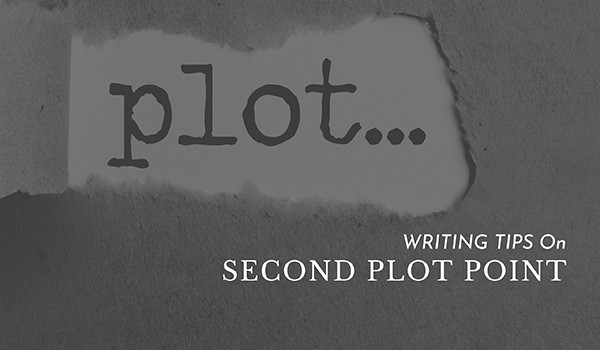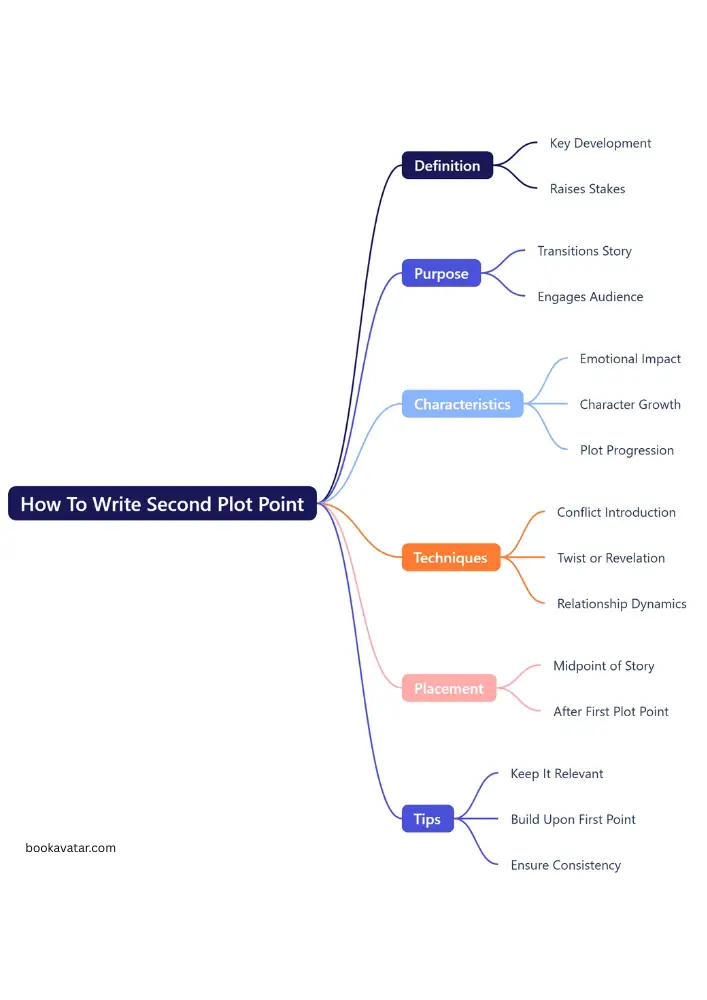
The second plot point occurs at the 75% mark at the break between the third quarter and the fourth quarter. It’s the simplest of all the plot points regarding what it needs to do. So the main thing you want to look at for your second plot point is some information or event that gives the protagonist the last piece of information they need to defeat the antagonistic force. Another way to look at the second plot point is that it forces the protagonist toward the climax.
So it’s almost the entry into the climax of the novel. It doesn’t necessarily mean that the protagonist moves straight into the climax, but it simply gives the protagonist a piece of information or new stakes to succeed. Being simple doesn’t necessarily make it any easier to understand how it might play out in your novel. So I will try to make it as clear as possible in this article.
How to write second plot point?
The key to creating a satisfying climax to your novel starts with the second plot point. It’s vital that in the fourth quarter, most of the pieces should already be in play. So the protagonist should refrain from gaining new information, allies, or skills vital to conquering the antagonistic force.

In other words, your protagonist should be capable of solving the problem, achieving their goal, or defeating the antagonist at the point they go into the fourth quarter. That doesn’t mean they will quickly walk up to the antagonist, defeat them and then move on and achieve their goal. It means that the protagonist has all the puzzle pieces in place. They have all of the allies they’ll need to take all of that into the climax and succeed. Because the second plot point introduces the last piece of vital information or the last event that pushes the protagonist toward the climax.
Certain genres can have more difficulty filling out the fourth corridor, and it’s why often, in horror, fantasy, sci-fi, or especially action, the protagonist will discover what they need to do. Then a whole corner of the novel will go by and will be a series of mini battles in larger battles. Eventually, they will get to the antagonistic force and have the final climactic showdown. So you’ll see that structure is very common in action movies because the writer wants to avoid introducing new information. After all, that would disrupt the structure.
So they need to make it take a long time to get from that last piece of information in that clear identification of what the protagonist needs to achieve to the climax. The main challenge people have when writing the second plot point is introducing it too late. The story is over because the character will move from getting this information directly to defeating the antagonist.
So the main problem is that the second plot point doesn’t fall near the 75% mark. It falls more like at the 90% mark. This can disrupt the structure of the novel and the pacing. It helps the reader to feel more satisfied with the ending when there is a larger gap between this last piece of information and the climactic showdown. Here are some tips for writing the second plot point easily. Let’s begin!
1. Give a goal
A common way to handle the second plot point that works pretty well is that it introduces the protagonist to what they need to do. But then, in the fourth quarter, there are a lot of trials, and a lot of effort needs to go into achieving whatever needs to be achieved. So, Harry Potter and the Sorcerer’s Stone is a good example of this because it’s so blatant in the movie as well as in the book.
Harry and his friends learn about the Sorcerer’s Stone. They learn from Hagrid that he accidentally revealed a secret, and they know exactly what they need to do. They need to get the Sorcerer’s Stone, but it’s a complex objective. They must walk up to the stone, pick it up, and leave. They face many trials and challenges on the way to getting the stone to connect back to things they’ve learned throughout the novel.
So the skills they’ve picked up and the allies that Harry has picked up with Ron, her mind becomes relevant. They are helpful to Harry in this climax. It gives the reader the sense that all of these things that led to this point were important because they all came together to solve the problem. Those trials and challenges that lead up to getting the Sorcerer’s Stone help to stretch out that space between getting that key piece of information. We need to get the Sorcerer’s Stone to achieve the goal during the climax.
2. Create a momentum
Ideally, the second plot point should also create this sense of momentum, the sense that the novel is speeding up. That’s another way to indicate to the reader the pacing, indicating that the character is moving towards the climax.
The reader wants to feel that the second plot point is speeding forward and that the climax is now inevitable. The character is going to end up in this final showdown. The key to writing a great second plot point is that it needs to set up the character, the protagonist, to move toward the climax.
The protagonist will have been moving towards the climax before this point, but for the first time, the protagonist will have a strong idea of what they need to do. It will be a final reveal of information or a final event that will push the protagonist toward the climax. This is how you’re going to solve the problem.
Example of the second plot point
The second plot point is like in Harry Potter, where the hero is more likely tied to the antagonist than they thought. They thought they were doing good. They find out at the second plot point that the antagonist knew what they were doing, and they were furthering the antagonist’s agenda. The antagonist talks with the protagonist directly. Everything that the protagonist believed in was a lie. The allies need to be trusted. There’s no hope!
So everything they had a plan. They were attempting to go through this plan. They thought they aimed to defeat the antagonist, but it all goes up in smoke. Whatever they were trying to do failed. That’s what happens about 75% of the way in. There’s a lot of depression, and they don’t know what to do next. Moreover, there’s no chance for success, and they need help figuring out what to do. So they give up what happens right after the darkness.
Please now write your unfinished second plot point undoubtedly. If you have any questions, then ask me in the comment below. Happy story writing!
More writing tips:
How To Write The First Plot Point?
Table of Contents
